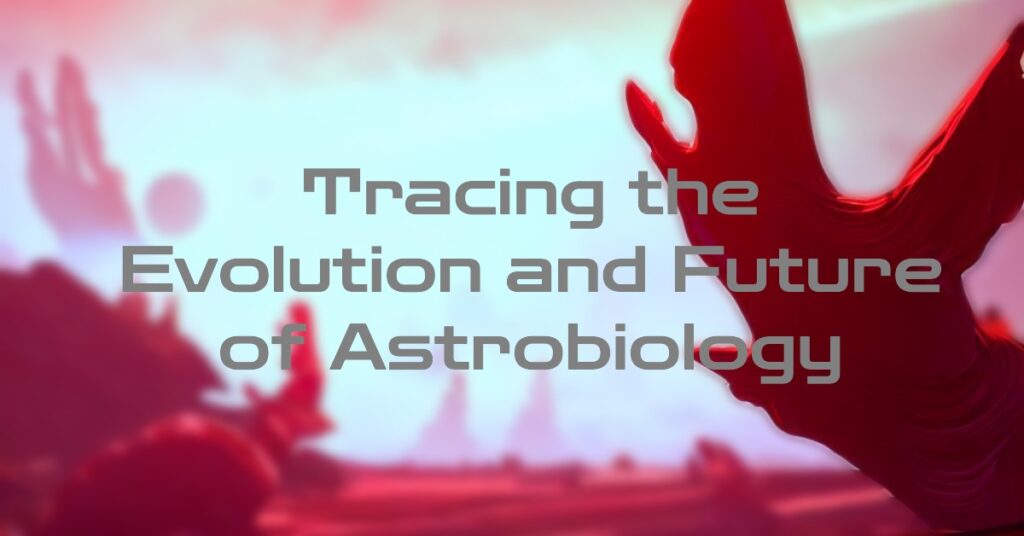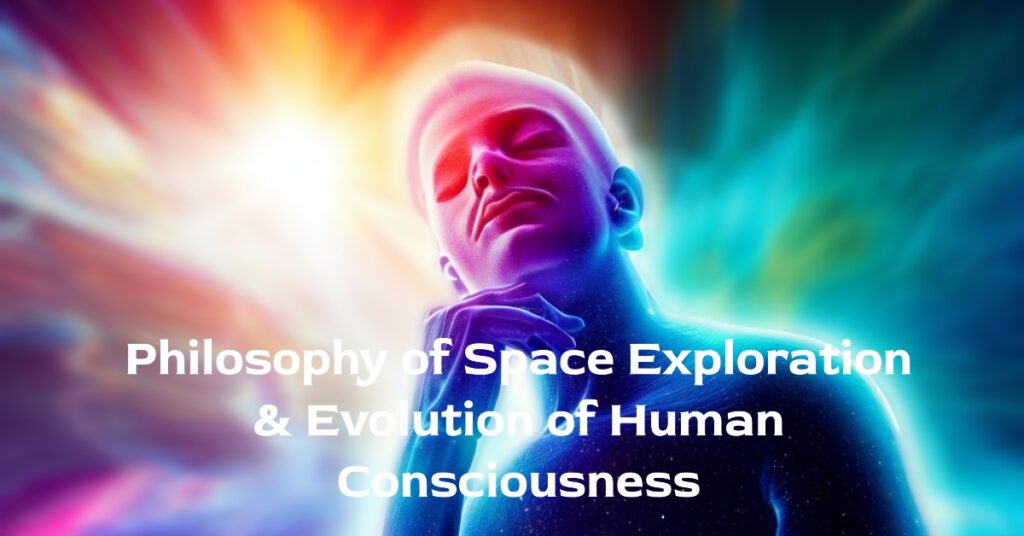The Search for Life Beyond Our Planet
Astrobiology is a fascinating scientific field that has gained much attention in recent years. But what exactly is it? Simply put, astrobiology is the study of life in the universe.
This means searching for and studying potential extraterrestrial life, as well as understanding how life originated on Earth and what conditions are necessary for it to exist elsewhere. The importance of astrobiology lies in its potential to answer one of humanity’s biggest questions: are we alone in the universe?
Answering this question would have profound implications for our understanding of our place in the cosmos and our own existence. But it’s not just about finding intelligent alien civilizations; even microbial life on other planets or moons could have significant implications for our understanding of biology and evolution.
Ancient Beliefs about Extraterrestrial Life
The search for extraterrestrial life is not a new concept; people have been contemplating the existence of aliens since ancient times. Many ancient cultures believed in gods or beings that lived beyond Earth, such as the Greek god Zeus or the Hindu god Shiva. Some even depicted these beings as visiting Earth from other planets.
In more recent times, scientists and philosophers have also speculated about the possibility of extraterrestrial life. In 1584, Italian philosopher Giordano Bruno proposed that there were countless inhabited worlds throughout the universe, while astronomer William Herschel suggested that some stars may be surrounded by habitable planets.
The Space Age and Modern Astrobiology
It wasn’t until the Space Age began in earnest during the mid-20th century that modern astrobiology truly took off. The launch of Sputnik by Russia in 1957 ushered in a new era of space exploration, prompting scientists to think seriously about what they might find beyond Earth.
In 1959, NASA was established with a mandate to explore space and study extraterrestrial life. The discovery of organic molecules in space during the 1960s and 1970s further fueled interest in astrobiology and the possibility of finding life beyond our planet.
Today, astrobiology remains a vibrant and exciting field of study, with researchers using a variety of methods to search for signs of life on other planets and moons. From analyzing the atmosphere of exoplanets to exploring the icy oceans beneath the surface of Saturn’s moon Enceladus, there is no shortage of fascinating research being conducted in this area.
The Roots of Astrobiology
How ancient civilizations viewed the possibility of extraterrestrial life
For thousands of years, people have looked up at the night sky and wondered if there was life beyond our own planet. Many ancient civilizations believed that the stars were actually gods or spirits watching over them from above.
They saw the planets as symbols of these celestial beings and often associated them with powerful events on Earth. The ancient Greeks, for instance, had a rich mythology that included tales of beings from other worlds.
They believed in the existence of planets and stars beyond our own solar system, which they thought might be inhabited by intelligent life forms. Likewise, Chinese astronomers were fascinated by comets and meteors, believing them to be messages from Heaven.
Early scientific theories on the existence of life beyond Earth
As science began to replace mythological explanations for natural phenomena, theories about extraterrestrial life became more grounded in empirical evidence. In 1584, Giordano Bruno proposed that other planets could potentially harbor intelligent beings like humans. He was later burned at the stake for heresy.
During the 17th century, scientists like Johannes Kepler and Christiaan Huygens expanded on Bruno’s ideas by suggesting that certain conditions might make a planet habitable for living organisms. In particular, they speculated that liquid water was necessary for life to exist.
In the 19th century, as telescopes improved and astronomers began to study Mars in detail, many scientists believed they had found evidence of canals built by an advanced civilization on its surface. Although these “canals” turned out to be an optical illusion caused by low-resolution images taken through Earth’s atmosphere – it sparked public imagination about what might lie beyond our world.
Astrobiology is a field with roots stretching back thousands of years – both to ancient mythology and early scientific speculation about the potential for extraterrestrial life. While these early thinkers lacked the technology and evidence to truly explore this idea, their curiosity laid the foundation for modern scientific inquiry into astrobiology.
The Space Age and the Birth of Modern Astrobiology
The Impact of the Space Race on Astrobiology Research
The exploration of space has always been a fascinating subject for humanity. The Cold War era marked the beginning of the Space Age, with both the United States and Russia competing in a race to reach new milestones in space exploration. This period of intense competition had a profound impact on many scientific fields, including astrobiology.
NASA’s Apollo program landed humans on the Moon for the first time in 1969, marking a major breakthrough for space exploration. It also opened up new avenues for astrobiology research, as scientists began to consider the possibility of life beyond Earth.
The search for extraterrestrial life became an increasingly important part of NASA’s mission. In addition to government-funded programs like NASA, private organizations such as SETI (Search for Extraterrestrial Intelligence) also emerged during this time.
SETI focused primarily on detecting radio signals from other civilizations in our galaxy.
All these efforts pushed astrobiology research forward and captured the public’s imagination.
The discovery of organic molecules in space
The discovery of organic molecules in space was another key development that led to the modern field of astrobiology. In 1977 NASA launched Voyager 1 and Voyager 2 spacecraft that explored different planets and moons, searching for signs of life beyond Earth.
The discoveries made by these spacecraft were groundbreaking – they detected organic molecules such as methane and ethane on Saturn’s moon Titan, which suggested that there might be potential sources of energy available there. Plus, comets were found to contain water which is one essential component required by living organisms.
Furthermore, observations made by ground-based telescopes such as ALMA (Atacama Large Millimeter/submillimeter Array) have allowed scientists to study complex organic molecules present in regions where stars are forming today or formed billions of years ago; raising the possibility of life existing on these planets. All these findings reinforced the search for life elsewhere and helped transform astrobiology into a more mature scientific field.
The Search for Life Beyond Earth
Methods Used to Search for Extraterrestrial Life
Exploring the possibility of life beyond Earth requires us to use innovative and imaginative techniques. The most popular methods used in astrobiology are SETI (Search for Extra-Terrestrial Intelligence) and planetary exploration missions. SETI primarily focuses on detecting signs of intelligent life in space, while planetary exploration missions aim to explore the potentially habitable zones in our Solar System.
SETI uses large radio telescopes to search for signals from deep space that could indicate the presence of intelligent extraterrestrial life. These signals could be anything from intentional communication attempts to unintentional radio waves produced by advanced technologies.
Although SETI has yet to detect any conclusive evidence of extraterrestrial intelligence, it remains a promising avenue for those searching for answers. Planetary exploration missions are another method used in the search for life beyond Earth.
These missions have provided us with invaluable information about our own planet and other celestial bodies within our solar system, including Mars and Europa – both considered prime targets in the hunt for alien life. They make use of orbiters, rovers, landers, and even human astronauts to explore other planets more closely and determine if they contain conditions suitable for life.
Discoveries Made by These Methods
Recent discoveries made through these methods have brought us ever closer to answering the age-old question: Are we alone? The discovery of microbial life on other planets would be a monumental discovery, as it would confirm our belief that there is more than one instance of abiogenesis (the process by which living organisms arise naturally from non-living matter). The Mars rover Curiosity discovered organic matter preserved within ancient rocks on its surface – an exciting find that suggests Mars may have once had the necessary conditions (such as water) required to sustain microbial life.
Meanwhile, Jupiter’s icy moon Europa has been found to have a subsurface ocean of liquid water, which could harbor life in forms we have yet to imagine. The discovery of exoplanets (planets that orbit stars other than our sun) has been a game-changer in the search for extraterrestrial life.
The Kepler Space Telescope alone has discovered thousands of exoplanets – many of which are in the “habitable zone” (the area around a star where conditions are ideal for liquid water). While none of these planets have yet been confirmed to host life, the possibilities for impactful discoveries remain endless.
Potential Habitable Zones and Microbial Life
One important factor to consider when searching for alien life is whether a planet exists within its star’s habitable zone. This zone is often referred to as the “Goldilocks” zone because it’s just right – not too hot, not too cold – for liquid water to exist on a planet’s surface. But even if a planet exists within its star’s habitable zone, it doesn’t necessarily mean that it will be hospitable to all forms of life.
When considering microbial lifeforms, some extremophiles (organisms that can survive in extreme environments) on Earth provide clues as to how certain types of microscopic organisms might survive on other planets. For example, some bacteria can withstand radiation levels hundreds or even thousands of times higher than what humans can tolerate.
Additionally, some bacteria thrive in extremely acidic or alkaline environments – conditions that would be hostile to most known organisms. Overall, while we haven’t yet found conclusive evidence for extraterrestrial lifeforms beyond our own planet Earth, these exciting developments and ongoing research give us hope that one day we might discover undiscovered realms teeming with alien organisms waiting to be explored and understood.
Astrobiology Today and Future Prospects
Current Research Topics in Astrobiology
Astrobiology is an incredibly diverse field, with researchers investigating everything from the possibility of microbial life on Mars to the habitability of exoplanets orbiting other stars. One of the most exciting areas of research in astrobiology today is exoplanet habitability. As we discover more and more planets outside our solar system, scientists are developing new methods for assessing whether or not these distant worlds could support life as we know it.
This involves looking at a range of factors, including the planet’s size, composition, atmosphere, and distance from its parent star. Another key area of research in astrobiology is extremophiles – organisms that thrive in extreme environments here on Earth.
By studying how these hardy creatures manage to survive in places like boiling hot springs or frozen glaciers, scientists hope to gain insights into what kinds of life might be able to exist elsewhere in our solar system or beyond. For example, recent research has shown that certain microbes can survive exposure to extreme radiation levels similar to those found on the surface of Mars.
Future Prospects for Astrobiology Research
As technology continues to advance at a rapid pace, there are countless exciting possibilities for astrobiology research in the coming years. One major area of focus will be exploring our own solar system in greater detail. Upcoming missions like NASA’s Europa Clipper and ESA’s JUICE will study Jupiter’s moons Europa and Ganymede, respectively, – both believed to harbor subsurface oceans that could contain microbial life or even advanced biospheres.
Advances in space telescope technology will also allow us to observe exoplanets with even greater precision than before – potentially revealing details about their atmospheres and even any signs of biological activity. Additionally, new tools such as synthetic biology may enable us to engineer organisms capable of surviving in alien environments, paving the way for future manned missions to other worlds.
Astrobiology is an exciting and ever-evolving field that holds tremendous promise for our understanding of the universe around us. As scientists push the boundaries of what is possible with new technologies and research methods, they are uncovering new insights into the origins and nature of life itself – both here on Earth and beyond.
To review, and go forward!
Astrobiology is a field that continues to inspire scientists and the general public alike. Through the centuries, humans have questioned whether we are alone in the universe, and astrobiology provides a framework for answering that question. In this article, we explored the early beginnings of astrobiology and how it has developed into a modern scientific field.
The Space Age was a significant turning point for astrobiology research, as it provided the tools necessary to explore our solar system and beyond. The discovery of organic molecules in space also hinted at the possibility that life may exist beyond Earth.
Today, researchers continue to search for signs of life on other planets through various methods, such as planetary exploration missions and SETI. These efforts have already yielded exciting discoveries like potential habitable zones and microbial life on other planets.
The continued study of astrobiology has countless implications for our understanding of life itself. It is an interdisciplinary field that brings together biology, astronomy, geology, chemistry, and more to explore questions about our origins and what lies beyond our planet.
As technology advances further, we can expect even more exciting discoveries in this field. Even though we have yet to find definitive evidence of extraterrestrial life outside Earth, the study of astrobiology allows us to explore new frontiers in science with endless possibilities.
Who knows what groundbreaking discoveries await us in this fascinating field? The quest for knowledge continues!

C M, a seasoned editor, journalist, and consultant, is deeply fascinated by the convergence of technology, space, and the future of humanity.
With a particular interest in transhumanity, futurology, and the philosophical and ethical dimensions of these domains, C M serves as the lead contributor to SpaceSpotlight and TranscendSphere.
When not penning insightful articles on these rapidly evolving fields, C M indulges in their love for podcasts and books, proudly embracing their status as a ‘Happy Nerd Extraordinaire!’



